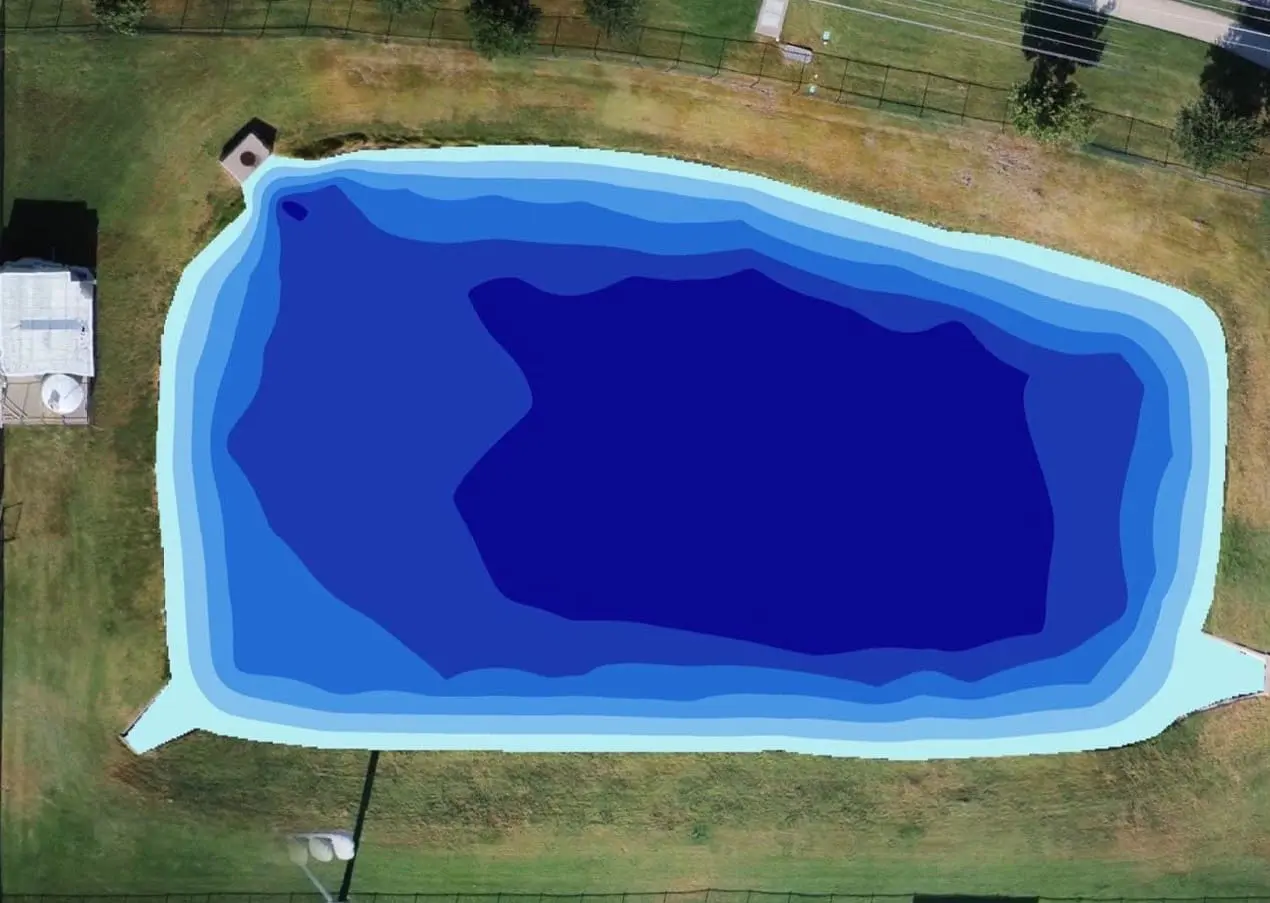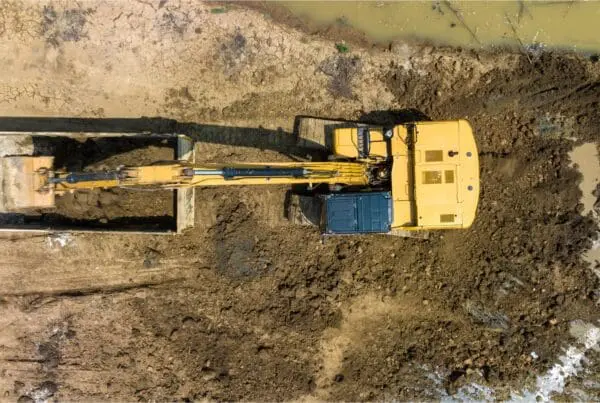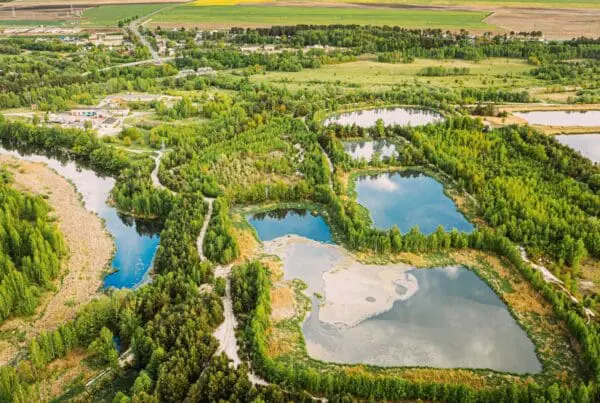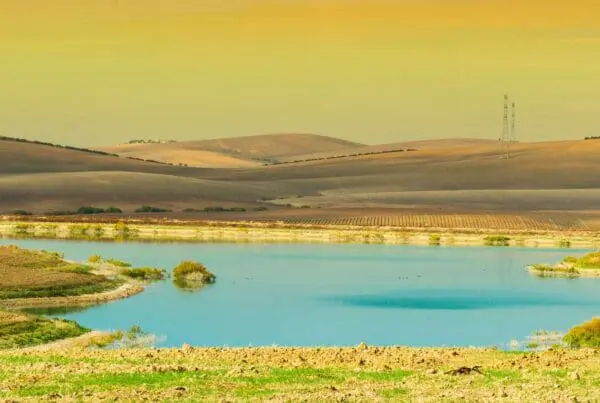One problem often overlooked in pond management is the accumulation of sediment, brought in through stormwater runoff, landscaping activity, or the natural flow of incoming waters. This influx of sediment into your pond can lead to a loss of total volume and possible compliance violations throughout its’ lifespan. Accumulation of excess sediments can lead to an increase in nutrient load, loss of total volume, and a myriad of other problems that can be costly to remedy if left unchecked. The best solution? Proactively planning maintenance, regularly inspecting both structural and biological components of your pond, and acting on issues promptly.
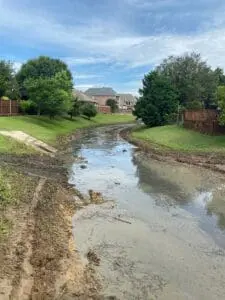
In the case of retention ponds, the main purpose is to hold a predetermined volume of water, releasing excess stormwater runoff via gradual overflow structures. As sediment accumulates on the bottom of the pond, the total pool volume slowly decreases. This will lead to unsightly sediment islands, algal blooms, and increased vegetation. Eventually degrading the effectiveness of your pond as a retention structure, costly fixes, and possible enforcement action from federal authorities. As the volume is lost, the full pool level is reached quicker and will result in an increased amount of water downstream. In the case of a serious rain event, downstream flooding and other issues can cause investigation by authorized agencies and enforcement initiation. These agencies attempt to ensure post construction compliance or act on some sort of information or observation regarding the state of the retention pond. This could lead to costly fines, expensive projects due to the large scope of problems, and stress for any community members that are stakeholders of the pond. This is an easy fix however, with regular inspection and survey, dredging and other maintenance activities can be done strategically and at a more reasonable cost. Costs can be spread out across the fiscal calendar to lighten the load on any given budget, and regular maintenance could prevent more costly issues altogether!
Moving on to the aesthetic ponds, the deposition of excess sediment can lead to the creation of unsightly islands as well as huge algal blooms, excess vegetation, and even fish kills. Not only that, but it can also degrade the quality of your fountains, stonework, and other features meant to enhance the appearance of your pond. Sediment washed in from a storm event, landscaping, or any activity can carry nutrients from organic or inorganic sources like fertilizers and encourage, not only the growth of algae, but nuisance plant species such as cattails, naiad, and coontail. This overabundance of plant life can quickly deplete the supply of oxygen in your water during night-time respiration cycles, leading to fish kills, plant die-offs, an overall horrible situation for any pond owner. If there are any fountains in the pond, they can become clogged or even beached on sediment islands in extreme cases. Situations like this can lead to a mechanical failure and turn your fountain into a non-functional eyesore, both of which can become costly to repair as the problem perpetuates.
 The solution again, is proper planning, inspection, and maintenance of all your aesthetic features in order to proactively address issues in a more cost-effective manner. While all of this can sound daunting, we can take care of it for you! PondMedics offers custom management plans, personal customer service, and an all-in commitment to making your pond the best it can be.
The solution again, is proper planning, inspection, and maintenance of all your aesthetic features in order to proactively address issues in a more cost-effective manner. While all of this can sound daunting, we can take care of it for you! PondMedics offers custom management plans, personal customer service, and an all-in commitment to making your pond the best it can be.
Written by Austin Michaelis, Environmental Scientist
